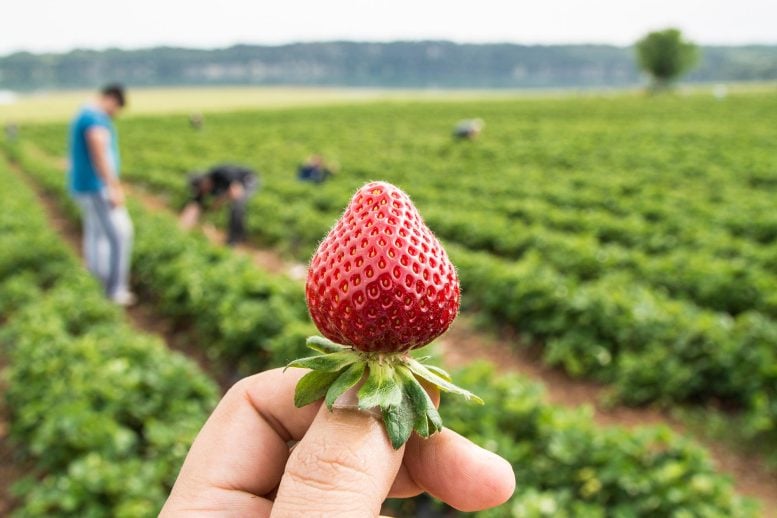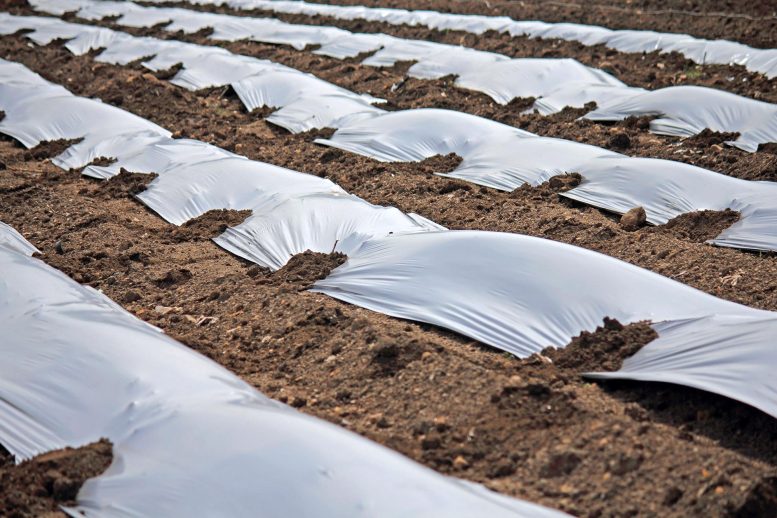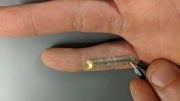
A recent study reveals that plastic mulch, commonly used in California’s strawberry farming, contributes significantly to soil plastic pollution. Despite its benefits, plastic mulch fragments are difficult to entirely remove and negatively impact soil health over time. Researchers are seeking solutions with manufacturers to address these environmental concerns.
Researchers have identified an alarming source of plastic pollution in Californian strawberry farms. Plastic mulch, a common tool in promoting strawberry growth, has been found to shed significant amounts of plastic fragments into the soil. This phenomenon adversely affects soil qualities and calls into question the long-term sustainability of plastic mulch usage. These findings likely have global implications for plastic use in agricultural production.
Presenting their work at the Goldschmidt geochemistry conference in Lyon, postdoctoral researcher Dr. Ekta Tiwari (from Sistla group at California Polytechnic State University) said “What we are seeing a huge quantity of macroplastic plastic material – particles bigger than 5mm across – being shed where the mulch is used to enhance strawberry production. These can remain in the soil for decades or longer.”
Plastics, such as polyethylene, are increasingly used in agriculture, for example in polytunnels. Plastic mulch films are extensively used in agriculture, where they provide a range of benefits. They are tucked in around the base of the plant, which can help control weeds and pathogens, reduce water evaporation, and prevent soil splashing on fruit (which is particularly important for strawberries).

Researchers have discovered that plastic mulch, widely used to support the growth of strawberries in California, sheds significant amounts of plastic fragments into the soil. These fragments negatively impact soil quality and challenge the sustainability of plastic use in agriculture. The problem is exacerbated by the fact that even meticulous plastic mulch removal leaves fragments adhered to the soil, resulting in plastic accumulation over time.
The mulch is applied in rows and then removed after the crop’s seasonal production is complete. However, even careful land stewardship by farmers does not ensure all the plastic is removed because fragments get left behind and adhere to the soil during removal. After decades of annual plastic mulch application and removal, the researchers observed the accumulation of plastic fragments within farm soils, even in really well-managed fields. The researchers looked for macroplastics, which are plastic pieces more than 5mm across.
Ekta Tiwari continued “We carried out a systematic survey of strawberry fields after the seasonal removal of these plastic film. We found that the distribution was fairly uniform. On field surfaces alone, we found up to 213,500 macroplastic particles per hectare. That doesn’t include subsurface particles, which we did not survey. In addition, we are currently analyzing the same soil samples for microplastics, which are smaller particles, less than 5mm across; these are not yet included in our findings.”
Note: A hectare is 10,000 square meters. For comparison, an average professional soccer playing pitch is around 7,100 square meters and an American football field is 5,350 square meters.
Most of the particles are polyethylene (identified using Fourier transform infrared spectroscopy). In preliminary findings, the researchers found that as the levels of macroplastic pollution increased, soil moisture content, microbial respiration, and plant-available nitrogen declined.
Dr. Tiwari added “The plastic mulch provides benefits, but at the expense of long-term soil quality. It’s difficult and expensive to remove these particles from the soil, so once they are there they can stay there indefinitely.”
We tend to think that strawberries are simply things to be enjoyed, but this shows that even something as delicious as fresh strawberries can come with a cost to the environment. We are working with the manufacturers to see if we can mitigate these costs.”
There are alternatives to using polyethylene mulches, such as biodegradable plastic mulches, or natural mulches such as straw, but these choices come with an economic l cost. However, the use of plastics in agriculture is also increasingly regulated, see for example European Union information here (PDF).
Commenting, Professor Sean Schaeffer (Department of Biosystems Engineering & Soil Science, University of Tennessee, USA) said:
“Plastics, and plastic mulches in particular, are vital to maintain agricultural production. They are used for various purposes including soil moisture retention, soil warming/cooling, as well as weed or pest control. Agricultural plastic use is increasing worldwide, with California being the largest user of agricultural plastic in the US. Research on the fate and transport of plastics in soil and water systems is relatively recent, so studies like this are vital to increasing our understanding of the scope the plastic problem. We currently know relatively little about the distribution, size, and types of plastic in soils in the largest states, both in land area and in agricultural production.”
This is an independent comment, Professor Schaeffer was not involved in this work.
This work is ongoing and has not yet been peer-reviewed. The researchers are currently evaluating the level of microplastic pollution (particles smaller than 5mm) left by plastic mulches. This study provides baseline data to understand the extent of plastic pollution in the U.S. agriculture system and can help improve land management practices by assessing the biogeochemical consequences of plastic accumulation in agricultural soils.









Use cardboard. It biodegrades and becomes fertilizer.
100 acre strawberry farm next door burn the plastic bed cover film they pull up each year. It’s horrendous.
OMG.! I guess it’s the poison they sprey under the plastic that makes it unrecycleable.Quite a waste.
How awful. My neighbors burn their household trash every WK and the smoke fills up and gets caught in our yard due to our trees. We have to come inside and close up all windows and doors. I can only speculate as to the contamination of our property bc they’ve been doing it for years. We’re afraid to plant a garden which is a shame bc our property is perfect for growing otherwise. I can’t even imagine having to live next door to what you’ve described. There should be strict laws against these practices considering they’re harming neighbors health and property.
I have witnessed heavy black plastic bags (fertiliser?) ploughed back into the soil. The crop was cauliflower, after packaging for supermarkets many clear plastic bags from the bagger were blowing around for days, the “core” of the bags was also left behind. What on earth can be done about this environmental desicration?
It’s really sad to think about what our children and grandchildren will be left to face.
This contamination is part of the make people sick program and to depopulate the earth…this evil must be stopped…china has ruined their soil and trying to buy ours before its all ruined..
I have lived the last 40 years totally surrounded by corporate strawberry growers. This article barely touches the tip of the iceberg. Thousands of acres of strawberry fields surrounding me are horribly contaminated with plastic. I challenge any accredited group that are serious about this issue to come and see for yourself how bad this contamination truly is….and it is not limited to just plastics. I have a rental available for housing.
Is this only with Strawberrys?